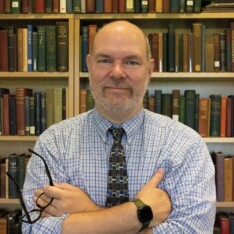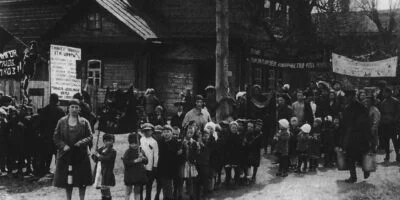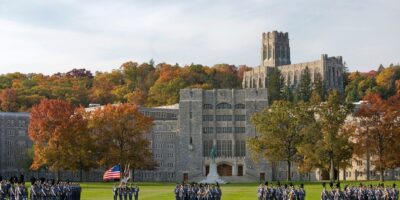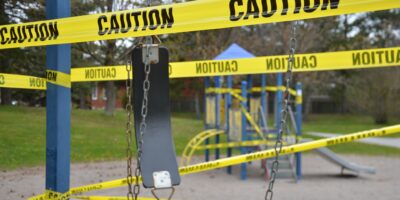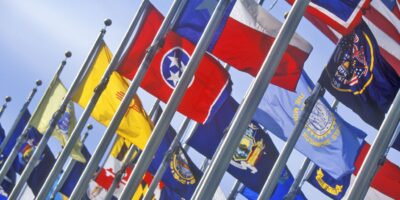Technocrats Should Observe the Hippocratic Oath
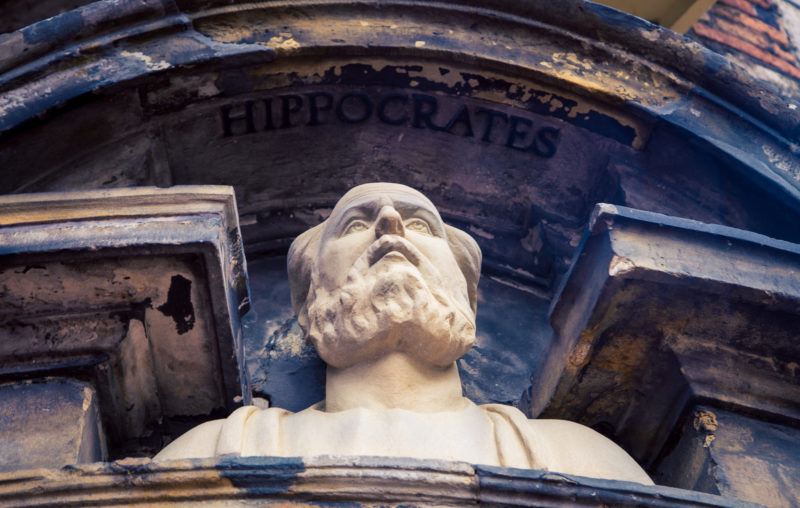
In some states, the lockdown reopenings are being reversed. We are seeing a new round of state versus state blame-mongering and recriminations. The new benchmark for normalcy to return is January 2021. Why that date? As with many benchmarks over these months, it’s completely made up.
We are supposed to believe that they know better than the rest of us, that government and not people and not medical professionals possess the essential knowledge we need.
As writer Bari Weiss commented in her July 14th New York Times resignation letter (albeit referring to the influence of hyper-woke Twitter intellectuals): “Truth isn’t a process of collective discovery [anymore], but an orthodoxy already known to an enlightened few whose job is to inform everyone else.”
Local knowledge, individual risk appetites, and personal responsibility are again being supplanted by the calculations and stratagems of technocrats.
All of which reminds me of Charles McKay’s Extraordinary Delusions and the Madness of Crowds. This book focuses on financial bubbles, and a particularly interesting portion of it discusses disease panics as exacerbated by the forecasting experts of the early modern period. They, like their modern day descendants, thrived in an era of top-down, deferred-to expertism; not armed with massive reams of data and analytical methods at their disposal, but the similarly arcane methods of scrying and divination.
McKay sets the stage: The Great Plague of Milan, 1629 to 1631. In the role that today would be occupied by the media, Hollywood, or another source of perceived wisdom, a prophecy passed down for generations held that
in the year 1630 the devil would poison all Milan. Early one morning in April, and before the pestilence had reached its height, the passengers were surprised to see that all the doors in the principal streets of the city were marked with a curious daub, or spot, as if a sponge, filled with the purulent matter of the plague-sores, had been pressed against them. The whole population were speedily in movement to remark the strange appearance, and the greatest alarm spread rapidly. Every means was taken to discover the perpetrators, but in vain. At last the ancient prophecy was remembered, and prayers were offered up in all the churches that the machinations of the Evil One might be defeated.
Added to the fear of the disease were worries that a foreign government was at work, actively spreading the sickness.
Many persons were of opinion that the emissaries of foreign powers were employed to spread infectious poison over the city; but by far the greater number were convinced that the powers of hell had conspired against them, and that the infection was spread by supernatural agencies. In the meantime the plague increased fearfully.
In a passage that reminds of early COVID-19 fears, long since dispelled:
Distrust and alarm took possession of every mind. Everything was believed to have been poisoned by the devil; the waters of the wells, the standing corn in the fields, and the fruit upon the trees. It was believed that all objects of touch were poisoned; the walls of the houses, the pavement of the streets, and the very handles of the doors. The populace were raised to a pitch of ungovernable fury.
“Snitch” policies directly reminiscent of present-day measures followed.
A strict watch was kept for the devil’s emissaries, and any man who wanted to be rid of an enemy, had only to say that he had seen him besmearing a door with ointment; his fate was certain death at the hands of the mob.
An old man, upwards of eighty years of age, a daily frequenter of the church of St. Antonio, was seen, on rising from his knees, to wipe with the skirt of his cloak the stool on which he was about to sit down. A cry was raised immediately that he was besmearing the seat with poison. A mob of women, by whom the church was crowded, seized hold of the feeble old man, and dragged him out by the hair of his head, with horrid oaths and imprecations. He was trailed in this manner through the mire to the house of the municipal judge, that he might be put to the rack, and forced to discover his accomplices; but he expired on the way. Many other victims were sacrificed to the popular fury.
Pity, in particular, poor Mora a “half a chemist and half a barber,” accused
…of being in league with the devil to poison Milan. His house was surrounded, and a number of chemical preparations were found. The poor man asserted, that they were intended as preservatives against infection; but some physicians, to whom they were submitted, declared they were poison. Mora was put to the rack, where he for a long time asserted his innocence. He confessed at last, when his courage was worn down by torture, that he was in league with the devil and foreign powers to poison the whole city; that he had anointed the doors, and infected the fountains of water. He named several persons as his accomplices, who were apprehended and put to a similar torture. They were all found guilty, and executed.
(And in an era in which statues and monuments are being pulled down or defaced, “Mora’s house was [razed] to the ground, and a column erected on the spot, with an inscription to commemorate his guilt.”)
While the public mind was filled with these marvellous occurrences, the plague continued to increase. The crowds that were brought together to witness the executions, spread the infection among one another. But the fury of their passions, and the extent of their credulity, kept pace with the violence of the plague; every wonderful and preposterous story was believed.
One Milanese resident described by McKay “had brooded over such tales till he became firmly convinced that the wild flights of his own fancy were realities.” Telling a story about an invisible phantom chariot and demonic laboratories, a story which at any other time would have been met with derision, was suddenly (as certainly occurs today) infused with credibility:
[T]he minds of the people were so impressed with the idea that scores of witnesses, half crazed by disease, came forward to swear that they also had seen the diabolical stranger, and had heard his chariot, drawn by the milk-white steeds, rumbling over the streets at midnight with a sound louder than thunder. The number of persons who confessed that they were employed by the Devil to distribute poison is almost incredible.
In summary, although there was indeed a disease spreading in Milan,
[a]n epidemic frenzy was abroad, which seemed to be as contagious as the plague. Imagination was as disordered as the body, and day after day persons came voluntarily forward to accuse themselves. They generally had the marks of disease upon them, and some died in the act of confession.
The conclusion, according to McKay? The soothsayer prophecies, “by taking away the hope of recovery – that greatest balm in any malady – increased threefold the ravages of the disease.”
Looking at the lockdowns and the consequent leveling of tens and perhaps hundreds of thousands of small businesses – and the myriad other costs that such a policy brings – one wonders: is there no probity? It’s clear that the architects of schemes will never apologize; well, not really. But will they be held accountable?
Perennially, proposals are made that economists, data scientists, and other individuals with influential knowledge sets should, like medical doctors, have to take a Hippocratic Oath: an oath upholding fundamental ethics.
While the original Hippocratic Oath did not, as it does now, require physicians to “First, do no harm,” the modern reach of technically-skilled elites via the media and policy should unquestionably bring that dictum.
A Technocrat’s Oath would not be restrictive of the mere practice of model building, running simulations, or other present day vaticinations. Rather, it would come into force where and when the forecasts of those methods are passed to policymakers. For one thing, at least three requirements should be met; and all preferably publicly:
- At least three major sources of inaccuracy – whether found in deficient sources of data, questionable assumptions, or estimates of sensitivity – must be expressed clearly – must be expressed clearly before and after a prediction is made;
- A discussion of statistical inference must be accompanied by a discussion of causal inference (preferably an interdisciplinary one); and,
- Any prognostication which does not prominently feature uncertainty as a growing factor over time must be summarily discarded.
If professionals whose judgment can directly impact one person are bound to a strict moral code (in addition to bearing legal and reputational risk), shouldn’t technocrats informing the highest levels of government face considerably more stringent standards of practice?
Perhaps another of the many effects of telling two or three generations of young people that a university degree is of unquestionable value is an undue veneration of the expert class. Many of our grandparents and great-grandparents, who had a formidable assemblage of wisdom but only a fraction of our formal schooling, were naturally doubtful in the face of boundless pessimism or optimism – especially when offered free of charge by bureaucrats from lofty heights of the Federal edifice. It was the people who lived through the Great Depression who offered such succinct quips as “You get what you pay for (and less),” and “It’s always darkest before the dawn.”
Whether by today’s standards or a medieval one, at a certain level of influence, unqualified prognostication is either ignorant, irresponsible, or deceptive. Pithy epigrams alongside basic skepticism, knowledge of personal hygiene, and a propensity to self-isolate in the face of illness have superintended the human relationship with microorganisms more than massive agent-based models ever will.

